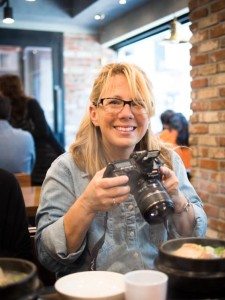What do editors want? How do you grab an editor’s attention?
If I could definitively answer that question for each and every editor, that would be something, wouldn’t it? But the reality is that it’s hard to know what any given editor needs from day to day.
However, there are several things that every editor is ALWAYS looking for, and providing these four things on a regular basis will give you a huge step ahead of the competition.
How do I know this? After thirty years in the business—including nine as the travel editor for The Denver Post and the last two as a freelance writer and editor—I have a pretty solid understanding of the top needs for publications. And it’s the editors’ jobs to meet those for his or her employer, which is where you come in.
The four surefire ways to grab an editor’s attention (and make his or her day) are:
1. Stories that explore something different
Writers often ask if any publication could possibly want yet another story on Paris.
Obviously, it’s been visited and written about thousands upon thousands of times, and yet, you still see stories about Paris.
The key is to come up with a way to write about Paris that tries something new. For instance, instead of writing about yet another brasserie, how about tracking down quick eats?
Or, rather than the usual visits to Notre Dame and the Musée d’Orsay, come up with unique approaches to the city, such as discovering it through the eyes of expats who have opened businesses there.
2. Stories that are well written
This might seem like a no-brainer, but you’d be amazed at how many stories and queries (also known as pitches) cross an editor’s desk on a daily basis that fail to meet even the basic requisites of addressing the 5 Ws (who, what, when, where, why, and sometimes a sixth: how).
It’s crucial to understand the necessary components of a good story: an appealing first sentence or two that grabs a reader’s attention; an explanation somewhere early in the tale that tells why the story is important; good transitions between paragraphs that give the story flow.
Do you feel uncertain about your abilities? Take a course or workshop—like the ones offered by Great Escape Publishing—that will leave you feeling confident about the writing itself.
3. Stories that have been fact-checked and spellchecked
Shouldn’t every story contain factual information that has been confirmed, and be free of spelling and grammatical errors? Absolutely. But do they always? Not even close. Keep in mind that a publication is only as credible as the people writing for it – and so both of these factors are critical to editors.
4. Clear, well-composed photos—or a way to get ahold of them
Don’t worry if you’re not a photographer. Editors are used to getting stories with no accompanying “art” (our word for photos in the industry).
If you can’t provide the art, then connect a publication with resources that can—a tourism or visitors bureau, local lodgings or restaurants. On the other hand, everyone can learn how to take photos—even if it’s just small detail shots, such as food at an eatery or close-ups of activities. If that’s not your forte, now might be the time to learn how (supplying the artwork usually results in extra pay, too).
Travel Writing Resources
How To Become A Travel Writer – The Easy Way
Easy Steps To Landing Your First Byline As A Travel Writer
Marketing For Travel Writers: 5 Ways To Get Started
22 Travel Story Ideas To Get You Published


